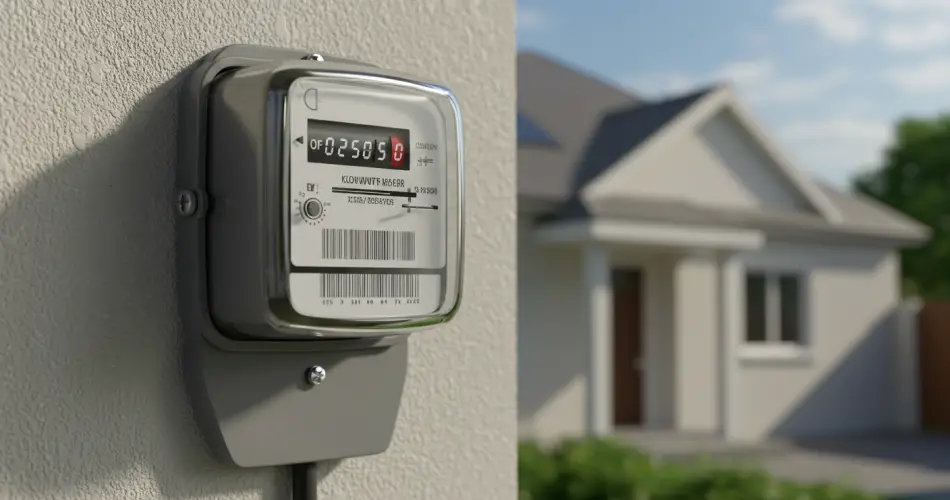Most households are struggling with rising energy costs, and many people look for ways to reduce their electricity expenses. What many don’t realize, however, is that a significant part of their bill depends not only on the supplier’s rates but also on the accuracy of the meter reading they submit. Making mistakes when reporting your electricity consumption can easily lead to inflated bills, sometimes even doubling the actual cost.
Understanding how to correctly read and report your electricity meter is therefore essential. Let’s explore why this matters, how to do it properly depending on the type of meter you have, and how to avoid costly errors and scams along the way.
Why Accurate Meter Readings Matter
Energy suppliers issue bills based on either estimated consumption or the actual reading provided by the customer. If you give an incorrect reading—or fail to provide one altogether—your supplier may rely on estimates, which often work against you.
-
Wrong readings: Submitting numbers incorrectly can lead to much higher charges. For example, reporting one digit too many can make it look like you used hundreds of extra kilowatt hours.
-
No readings: If you don’t report your usage, many suppliers will calculate based on average consumption or on past data. This means you could be billed for more electricity than you actually used.
-
Correction only later: While suppliers typically make adjustments in later bills (known as a “reconciliation” or balance adjustment), this may take months. In the meantime, you end up paying inflated bills.
Given how expensive electricity already is, avoiding such mistakes is an easy way to keep your household budget under control.
How to Read Your Electricity Meter
The correct method depends on whether you have a traditional mechanical meter or a modern electronic meter.
1. Reading a Mechanical (Traditional) Meter
These older meters have a transparent window with rotating dials or digits. To read them correctly:
-
Note down the numbers exactly as they appear, from left to right.
-
Ignore any numbers after a decimal point or in a red box—only report the whole numbers.
-
If the needle is hovering between two numbers, record the lower number.
This ensures the supplier receives the correct total and avoids confusion.
2. Reading a Digital or Electronic Meter
Electronic meters are increasingly common and display readings on a small digital screen. To access your consumption data:
-
Press the designated button on the meter to cycle through information.
-
The screen will show several values, such as:
-
Customer number
-
Current tariff or time band (daytime, nighttime, or peak hours)
-
Instantaneous power being used
-
Total energy consumption for each time band
-
What you need to report are the cumulative consumption figures for the relevant time slots. These may be labeled as T1, T2, or T3, depending on your supplier’s tariff system.
By recording and sending these numbers, your supplier can calculate your bill precisely, avoiding overestimates.
The Risks of Incorrect or Missed Readings
If you make a mistake when submitting a reading, your supplier has no way of knowing whether the numbers are accurate or not. As a result:
-
Bills may double: An incorrect digit can make it seem like you used far more electricity than you actually did.
-
Suppliers may overestimate: If you don’t provide any readings, suppliers often base your bill on assumptions, which are rarely in your favor.
-
Cash-flow problems: Even though suppliers usually correct overpayments in the following billing cycle, this means you’ve already spent more money than necessary—sometimes hundreds of dollars.
It’s clear, then, that taking a few minutes to read your meter properly can spare you from significant financial headaches.
What Happens If You Overpay
Fortunately, if you accidentally overpay because of an incorrect reading or an overestimated bill, energy companies usually issue a refund or credit adjustment in your next statement. This process, called a bill reconciliation, ensures you eventually get your money back.
However, this doesn’t make the initial problem less stressful. Having to pay inflated bills for several months in a row can strain your budget and create unnecessary financial pressure. Prevention—through accurate reporting—is always better than correction later.
Common Scams to Watch Out For
Apart from the risk of self-inflicted errors, consumers must also beware of fraudulent calls pretending to come from energy companies. These scams are increasingly common:
-
Callers claim to be from your electricity provider and offer a “cheaper plan.”
-
They may ask for your personal data, banking details, or even request that you sign up immediately over the phone.
-
Many unsuspecting consumers fall into the trap and later discover they’ve been switched to a fraudulent or unfavorable contract.
To stay safe:
-
Never provide sensitive information over the phone unless you are certain of the caller’s identity.
-
If in doubt, hang up and call your supplier directly using the official customer service number.
-
Avoid signing or agreeing to anything on the spot. Always request written documentation first.
Practical Tips to Avoid Extra Costs
-
Check your meter regularly—at least once a month—to keep track of real usage.
-
Report the reading on time through your supplier’s preferred channels (online portal, app, or phone).
-
Double-check the numbers before submitting to ensure no digits are missing or added.
-
Take a photo of your meter reading as proof, in case of disputes with the supplier.
-
Be cautious of unsolicited calls or offers and only trust official communication.
Final Thoughts
With energy costs climbing higher each year, no one can afford to pay more than necessary. A simple mistake in reporting your electricity consumption can make your bill skyrocket—sometimes even double what you should be paying.
By learning how to properly read both traditional and digital meters, and by submitting your readings carefully and on time, you can ensure that your bills reflect your actual usage. Combine this habit with vigilance against scams, and you’ll not only save money but also protect yourself from unnecessary stress.
In the end, a few minutes of attention to your electricity meter can mean hundreds of dollars saved every year—money far better spent on your household than on inflated bills.



